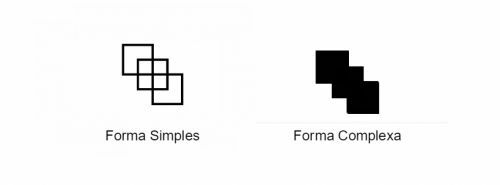Gestalt, Gestalt or Psychology of Form is a doctrine of psychology based on the idea of understanding the totality so that there is a perception of the parts. Gestalt is a word of Germanic origin, with an approximate translation of "form" or "figure".
THE Gestalt theory, also known as Gestalt Psychology or Psychology of Fitness, is part of the studies of human perception, which began to develop between the end of the 19th century and the first years of the 20th century. The pioneers of this doctrine and formulators of Gestalt Laws were the psychologists Kurt Koffka, Wolfgang Köhler and Max Werteimer.
Gestalt emerged as a doctrine opposing the Atomism, a philosophy that believed that the perception of the whole was possible only after understanding the different parts.
According to Austrian psychologist Christian von Ehrenfels, human perception is formed from the joining of two characteristics of forms: the sensitive (relative to the object itself) and the formal (the ideals and particular worldviews of each individual).
Gestalt Laws
These laws were established from the observation of the brain's behavior throughout the process of perception of shapes and images.
The Gestalt Basic Laws are: Similarity, Proximity, Continuity, Pregnancy, Closeness and Unity.
- Law of Similarity: similar images tend to cluster together, according to the perception of the human mind.

- Proximity Law: close elements tend to group together, forming unique images.

- Continuity Law: points that are connected by the shape of a straight line or curve, convey the feeling that there is a single line connecting them.

- Pregnancy Law (Simplicity Law): the elements present in a given environment are seen in the simplest possible way, so that there is a quick assimilation of the environment or element.

- Closing Law: elements that appear to complete are interpreted as a complete object.

- Unit Law (Unification Law): empty spaces of abstract images are instinctively filled to be understood by the human mind.

See also: the meaning of psychology.
Gestalt therapy
It is a psychotherapeutic practice developed by theorists and psychotherapists Fritz Perls, Laura Perls and Paul Goodman, in the mid-twentieth century.
Inspired by Gestalt Psychology, Existentialism, Phenomenology, Lewin's Field Theory, among other doctrines, Gestalt-therapy presents a more “poetic” proposal of psychotherapy.
The purpose of this model is to associate cognitive practices with the patient's emotions and feelings, so that he can see new ways of facing difficult situations in life.
Some people consider Gestalt therapy as an existential philosophical current, where the person undergoing treatment has the object of mastering the “art of living”.
Also known as "Contact Therapy", Gestalt therapy seeks interaction with the known and unknown parts of the identity of the individual, enabling him to develop his potential, self-knowledge and growth as human being.
See also: the meaning of behaviorism and of the Psychoanalysis.
